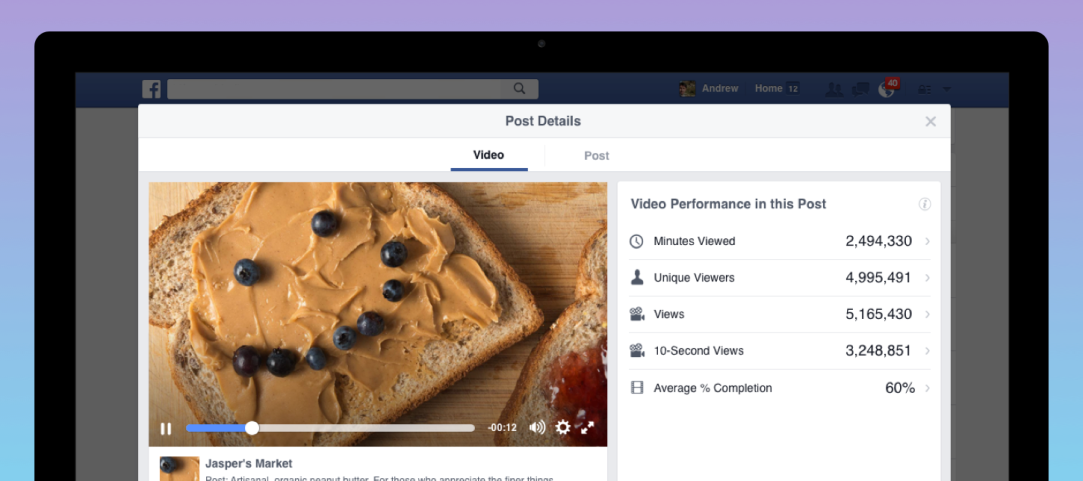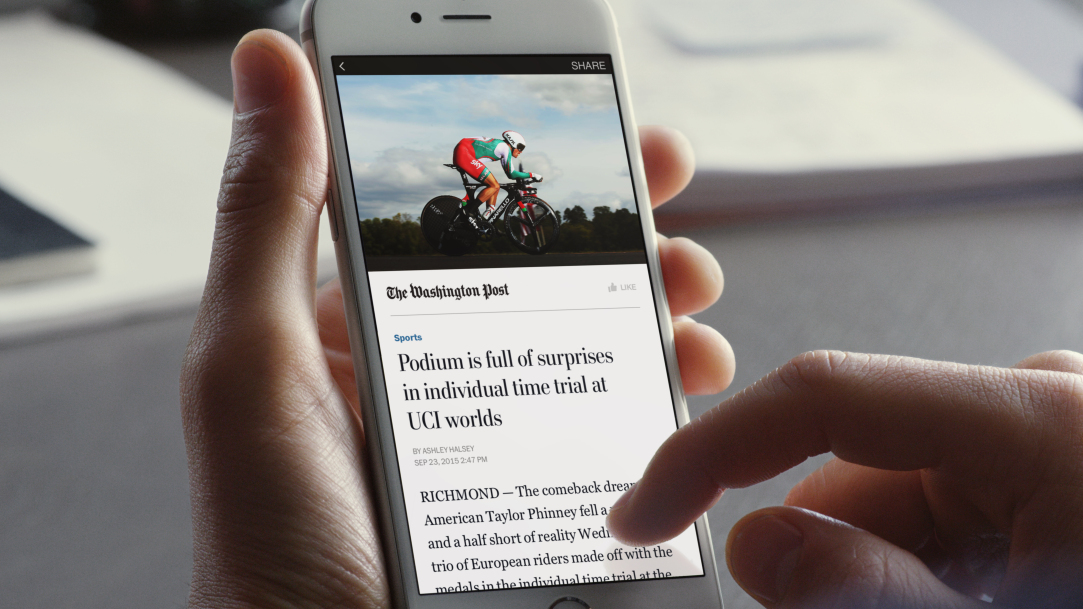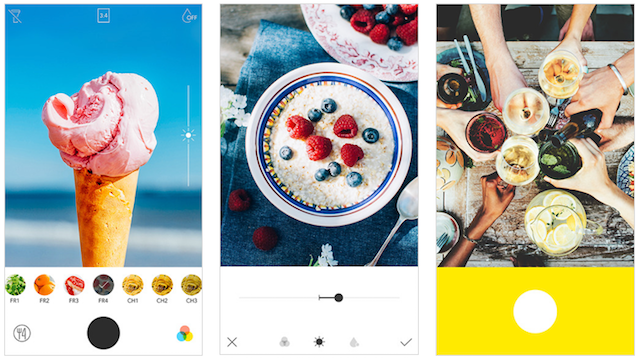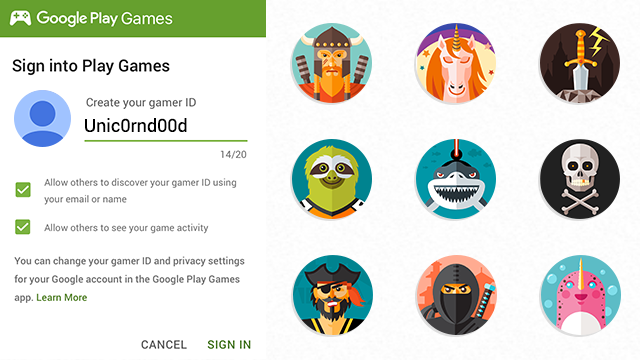The week in social: Twitter GIFs, Foodie, and Google Gamer IDs
Facebook introduces updates to Video Metrics
In a post on the Facebook Media site, the company announced new changes to video metrics. Among a host of updates to currently existing metrics, new items have been introduced including minutes viewed, 10 seconds views (number of times a video was viewed past ten seconds), and a comparison of how many users viewed a video with sound on versus off. Some of the more interesting updates to currently existing metrics include applying the new features across organic and paid metrics. The updated metrics are available on Page Insights currently and will be extended to the Insights API soon according to the post.

Read more on Facebook Media.
Instagram begins rolling out double authentication
A feature that has long been requested by many users, Instagram has started rolling out double authentication cross-platform. The way this works is when a user logs into their account with their username and password, a code can be sent to a specified mobile device that will then have to be entered as part of the log in process. This prevents would-be hackers from either guessing or decoding a password and gaining entry into an account, an increasing concern as many high-profile individuals have accounts on the service. Instagram is one of the last major social media networks to introduce this feature, as parent company Facebook, and Twitter have both had it for several years.
More information on The Verge.
Everyone can now use Facebook Instant Articles
Another update that came from Facebook this week on their Media site noted that the Instant Articles feature would be open to publishers of all sizes starting on April 12th, the date of the company’s latest F8 conference. The crux of Instant Articles is that is allows publishers to host content in a format internal to Facebook so that load times are much faster, and the viewing and consumption format of the content is native to Facebook. The user does not have to leave the Facebook environment, and the publisher can serve content more quickly, with less concern for connection speed of the user. Publishers are still able to carry over advertising that exists on their site and keep all of the revenue, something Facebook was careful to point out in their post.

Read more on Facebook Media.
Twitter introduces new features into direct messaging
Rolling out globally across both iOS and Android, Twitter users on mobile now have the ability to record and send video within direct messages, as well as share already existing videos. This is part of a larger push for Twitter to improve upon its basic feature set at a time when it is aggressively seeking to add new users to the service. The company has been facing a stagnating user base, and in recent weeks and months has introduced new radical changes, such as an algorithmic-based timeline option, similar to what Facebook does by default.
More information on The Verge.
Line launches Foodie camera app
Popular mobile-messaging service Line has released a specialized app for taking and editing pictures of food, called Foodie. Already a popular activity across a wide variety of social networks, the Foodie app lets users filter their photos with 24 different choices, as well as add additional special effects on top. Users are able to share the photos they take within Line, but they can also be exported to networks such as Facebook, Twitter, and Instagram.

More information on Social Times.
Twitter introduces new customer service features
Twitter is introducing new features to help make it easier for brands to interact seamlessly with their customers. The first is by providing a direct link to create a direct message for a user who is reaching out to a brand. When a brand responds to a consumer who @mentions them, the brand can respond with a specific link they can tap on their device to open up a DM dialogue. This is meant to stem any public negative conversation around the brand, as well as to provide a speedy response to the customer. The second feature is a customer feedback form that a user can fill out privately after a conversation with a customer service representative from the brand in a direct message.
More information on Twitter Blog.
Periscope adds new features to its iOS app
Periscope viewers now have a few additional options to help them discern what types of content they want to view. The service earlier this week added a daylight curve to its map, such that when users are searching for a stream, they can more easily decipher between a stream done in the daytime versus the night. This is also said to be able to allow users to seek out streamers who are broadcasting when the sun is rising or setting. Additionally, viewers can see the local time of a stream while the stream is actively live. Lastly, if a user is on an iPhone 6 or newer iOS device, a feature called broadcast stabilization will be available.
More information on Social Times.
Google introduces unique IDs for Google Play Games
Google is making changes to how its Play Games service works, and the service no longer requires users to have a Google+ account in order to access it. The new way to get into the service is through creation of a Gamer ID, where users can choose a new username and an avatar to go with it, not completely unlike the Apple Game Center system. The Gamer ID can be linked to a Google account, or can be kept completely separate. Users can connect with each other through the system, and if the ID is linked to a Gmail address, a user can be searched for this way.

Read more on The Next Web.
Twitter launches GIF search
Announced in a blog post earlier this week, Twitter has launched a GIF search service on its platform, that lets users browse a GIF library by keywords, and insert them straight into tweets or direct messages. The service is currently rolling out to all users worldwide over the next couple of weeks on iOS, Android and web. The launch of the service is through Twitter’s integration with GIPHY and Riffsy. Other services such as Facebook Messenger already have integrated GIF searches as add-ons to the platform.
More information on Twitter Blog.
Facebook aiming to bring social to virtual reality
Speaking at the Mobile World Congress in Barcelona, Spain earlier today, Mark Zuckerberg spoke about how Facebook is seeking to bring a “Social VR” experience to the Samsung Gear platform, the seeds of which are planted through a partnership between the two companies as the new Galaxy handsets are launched, which comes with a Samsung VR device if pre-ordered. Specifically, Facebook is planning to bring its 360 video format to the Samsung Gear VR device. Samsung has created a Social VR team that will be working with Facebook and its recently acquired Oculus technology team to create Zuckerberg’s vision for social VR, although what exactly that will encompass is yet to be seen.
More information on The Next Web.